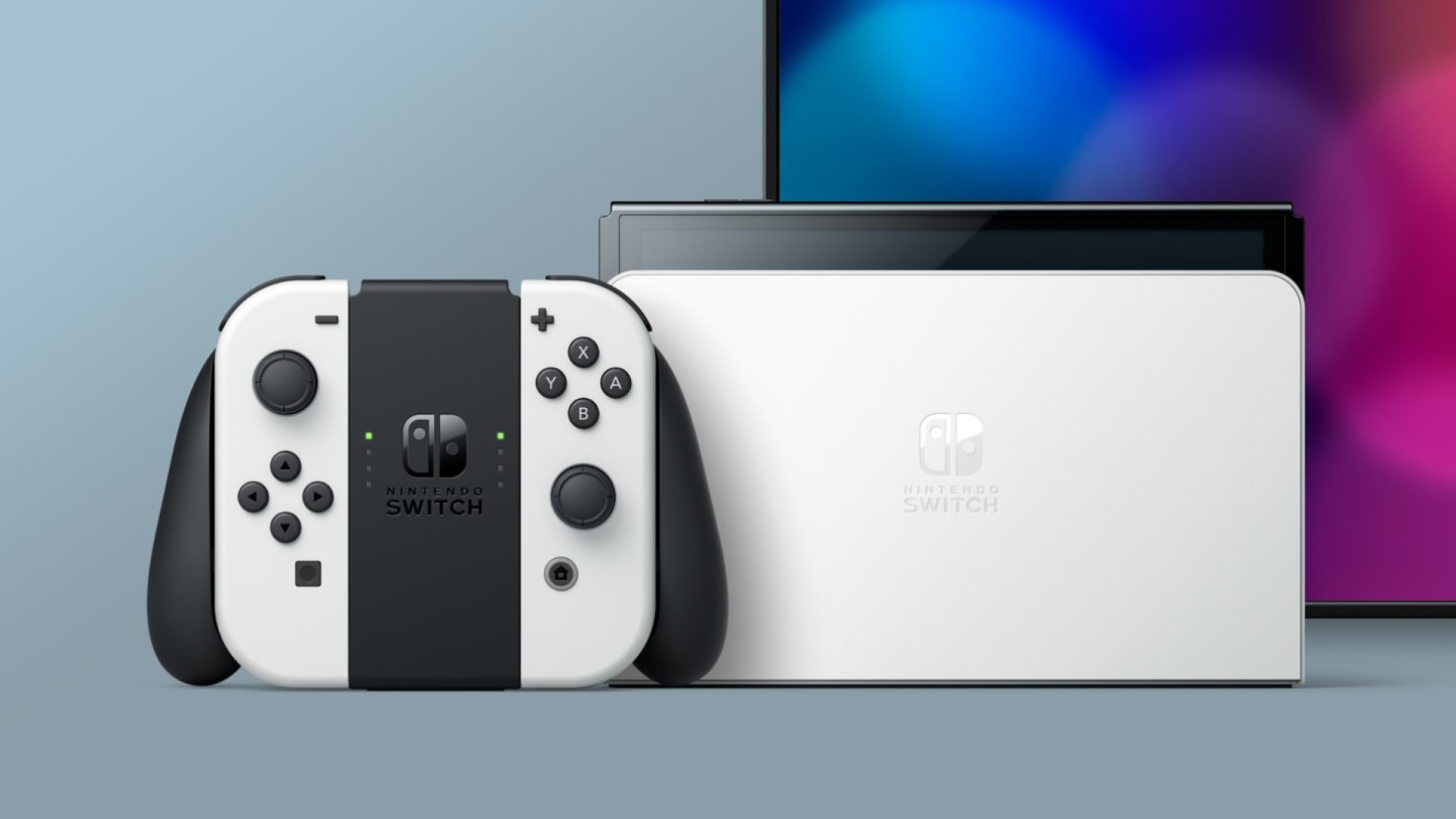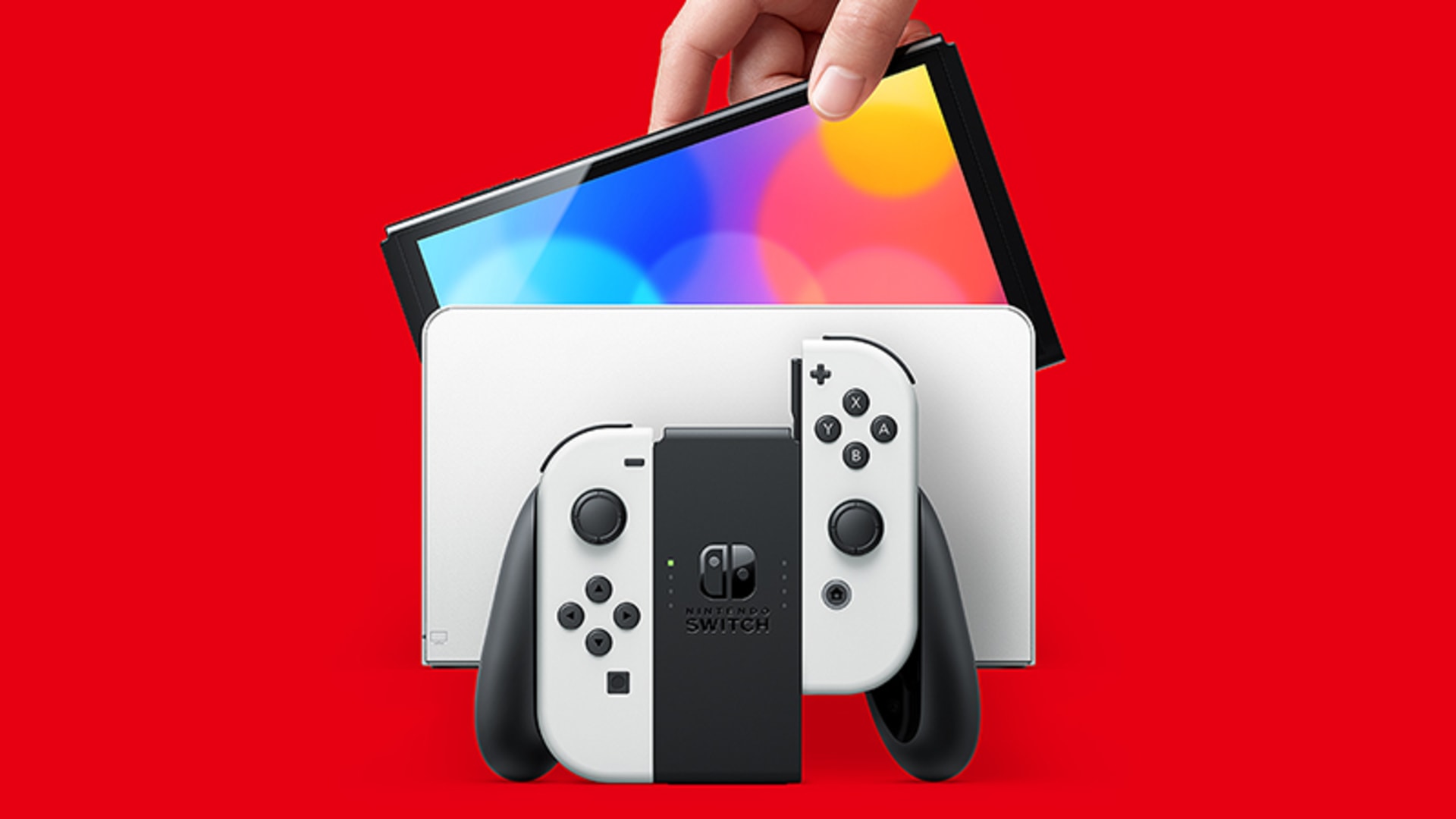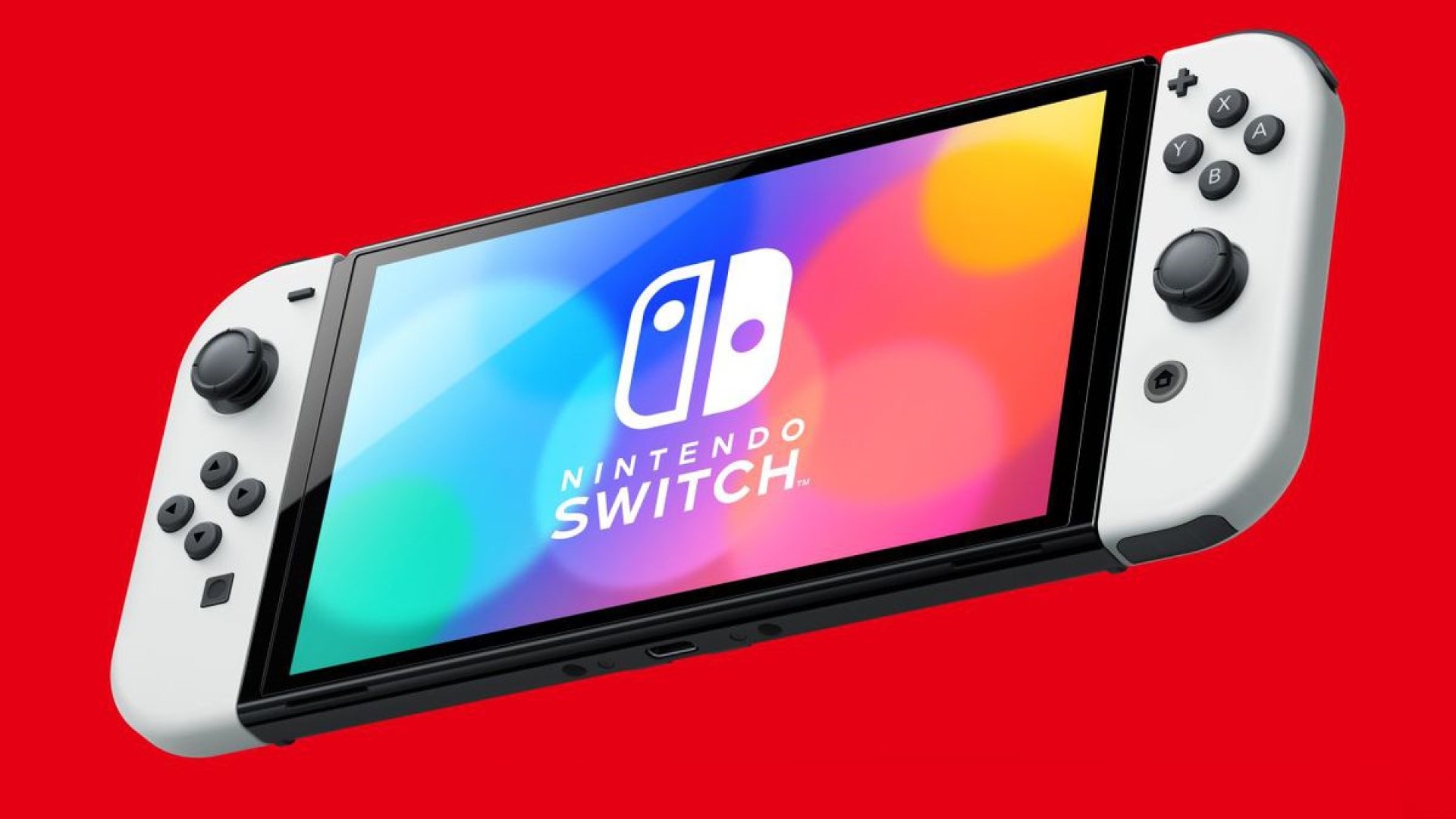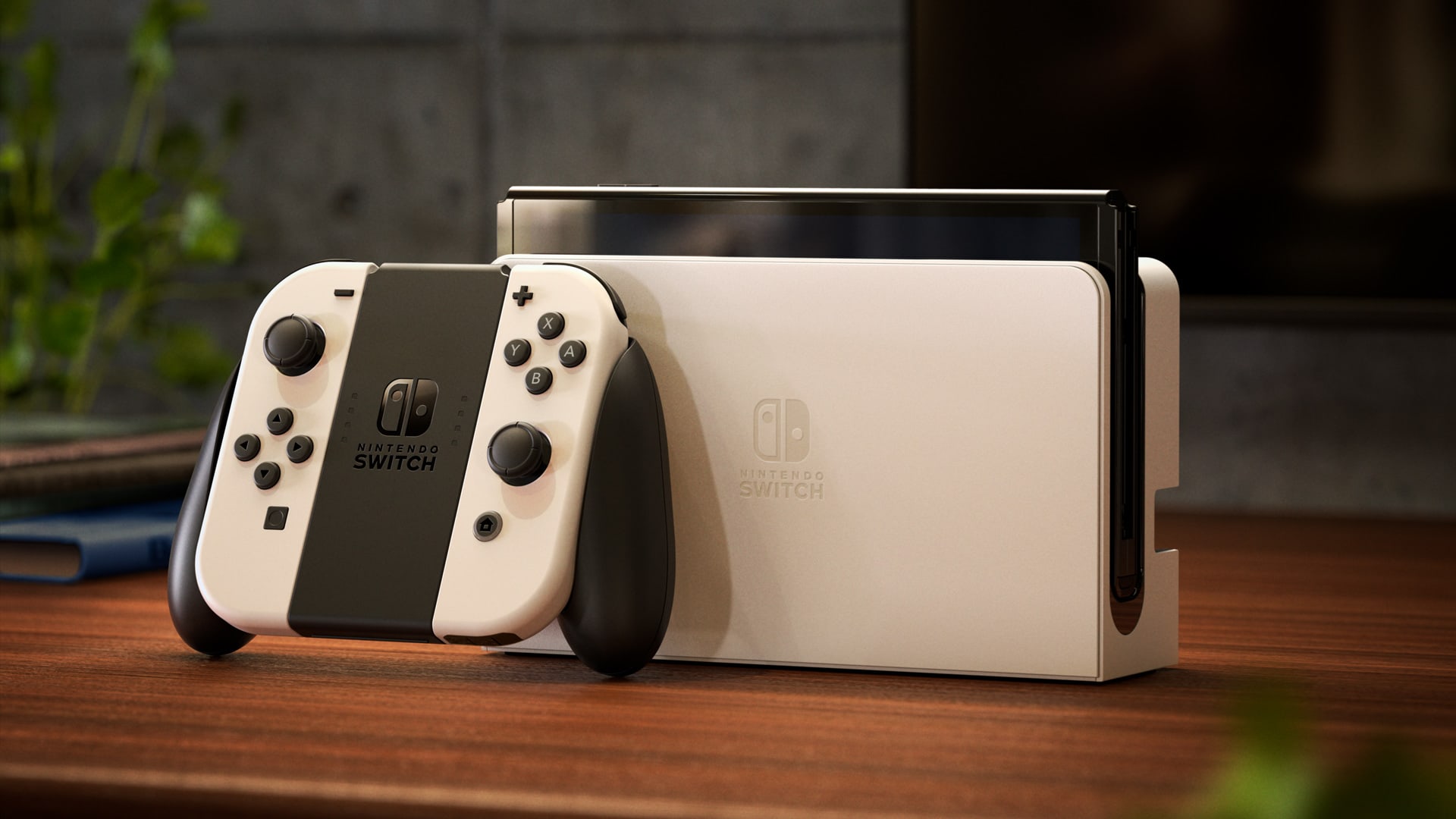
By now, everyone knows about the Nintendo Switch OLED following months, even years of rumors over an upgraded model. It’s been interesting following them till now – from January 2019 when analyst Dr. Serkan Toto believed that a Switch Pro was in development along with a Switch Lite (the latter confirmed in July that year) to details of an upgraded console having an OLED screen, 4K support, a new dock and DLSS support. Looking back, it was Bloomberg’s Takashi Mochizuki in March 2021 who correctly reported the console having a 7 inch OLED screen with a 720p resolution. But there was still some expectation that Nintendo would offer a faster console with better hardware.
So when the Switch OLED was finally revealed with its built-in LAN report, new wide and adjustable back-stand, 64 GB internal storage and 7 inch screen, the lack of mention for any performance improvements was sobering. Nintendo further confirmed that the console didn’t have a new CPU or more RAM, remaining pretty much the same as its predecessor.
A more powerful Switch has been one of the bigger demands from fans over the years. It was obvious before the console’s launch that it was nowhere near as powerful as the Xbox One or PS4, let-alone their upgraded counterparts. The games were and continue to be top-notch and Nintendo still has plenty of exciting projects on the way, be it Metroid Dread or The Legend of Zelda: Breath of the Wild’s sequel. One could compare this upgrade to Apple’s latest iteration of the iPhone or iPad, except more than four years later and with nowhere near the amount of substantial changes.
That being said, it makes perfect sense why Nintendo went this route. Take a quick peek at the Switch hardware sales – it’s sold over 84.5 million units worldwide as of May 2021 and regularly tops hardware sales in the United States, Europe and Japan. It’s still receiving strong software support and Nintendo has only just hit its stride with regards to indie offerings. A refresh, no matter how minor, is easy money for the company.
Nevertheless, it leaves a bad taste for multiple reasons. When Super Mario 3D All-Stars was released and touted to be available for a limited time to purchase, the ensuing FOMO helped it sell 9.01 million copies as of March 31st 2021. Given the minimal changes made to the ports, it was a great way for Nintendo to artificially push demand and earn heaps of revenue. Titles like Metroid Dread and The Legend of Zelda: Skyward Sword HD have accompanying amiibos which grant actual in-game benefits. Both titles are likely going to sell well so why not earn a little more on the side from amiibo sales? It makes sense, even if it is kind of shady.
The Nintendo Switch OLED is in the same boat especially when since the base Switch model isn’t getting a price reduction. It’s a pretty ingenuous strategy – the question isn’t whether the OLED model is worth $50 more or not but why you’d continue to pay for the same hardware when you could get it with a few new bells and whistles for a little extra. It’s the embodiment of The Simpsons’ “But she’s got a new hat!” moment.
Some fans may argue that this is par for the course for Nintendo which released several iterations of its handhelds over the years. Back in the day, there was the Game Boy Advance SP with a rechargeable battery and back-lit display…and then Nintendo released the AGS-101 model, which was the exact same but offered two brightness settings. And who can forget the lack of a headphone jack in the GBA SP, which necessitated purchasing special headphones or an adapter for extra? The Game Boy Advance sold 81.48 million units worldwide as of June 30th 2009 and the GBA SP made up more than half that number so again, great business sense from Nintendo.
Of course, it’s worth noting that the Nintendo DSi was a significant improvement over the regular DS and released four years after the base model. It had a better processor, four times as much RAM and more storage. The New Nintendo 3DS followed roughly the same pattern, releasing more than four years later in the US after the base version and having a significantly better processor and more RAM. We’ll come back to this in a bit but both handheld lines were very successful, selling tens of millions of units.
As for the Switch OLED, things get even more intriguing when you consider the rumored Switch Pro. It’s apparently still a thing, completely separate from the Switch OLED. VentureBeat’s Jeff Grubb has been hearing that it will release in 2022 and have a more “efficient chip.” Dr. Serkan Toto believes that the new model appears more like “an interim model” than a proper upgrade. “This might just be a dummy upgrade until Breath Of The Wild 2 is ready and the component shortage is over next year,” he said on Twitter. One may dismiss any rumors about the Switch Pro at this point but this does make the most sense given how recent events have impacted the world over the past year.
You could argue that expectations for the Switch OLED are mismanaged because of the rumors – Nintendo never said it was working on a more powerful Switch so why should people be upset? It’s never been one to compete with the likes of Sony and Microsoft in terms of power. But if you look back on the history of the Nintendo DS and 3DS, it absolutely has offered more powerful hardware with its refreshes. Given the number of different models for both handhelds, whether its Lite versions, XL version, “New” versions, the Switch’s release pattern becomes a bit familiar.
Granted, Nintendo hasn’t released a major hardware refresh only one year after a minor one – even the New Nintendo 3DS launched three years after the 3DS XL and two years after the 2DS in the US. Maybe it wanted to launch the Switch Pro alongside the Switch OLED this year itself but component shortages forced a delay.
Taking all this into account, the Switch OLED will release this year, make a lot of money – both off of current Switch owners and new ones – and then Nintendo could roll out the Switch Pro next year for even more returns. One could also see the older Switch slowly being phased out while $350 becomes the new entry – a price reduction could happen but looks very unlikely at this point. Again, it’s the best scenario business-wise but from a consumer point-of-view, charging for a new Switch model this year and then again next year for the Switch Pro feels kind of scummy.
At any rate, even if a proper Switch Pro isn’t in the works, the Switch OLED indicates that Nintendo is more than happy for fans to pay for the same performance they’ve been experiencing since 2017. It’s also satisfied with the current status quo where some titles struggle to maintain a solid frame rate or offer resolutions higher than 900p (and in some cases, 720p). When it’s worked out so well in terms of sales, you have to just ask: Why not? Nevertheless, looking at the heated discussions about cross-gen titles and when games on the Xbox Series X and PS5 will start having those “next-gen visuals”, it’s funny to see Nintendo firmly planted in the previous generation, proudly boasting about its new hat.
Note: The views expressed in this article are those of the author and do not necessarily represent the views of, and should not be attributed to, GamingBolt as an organization.


















